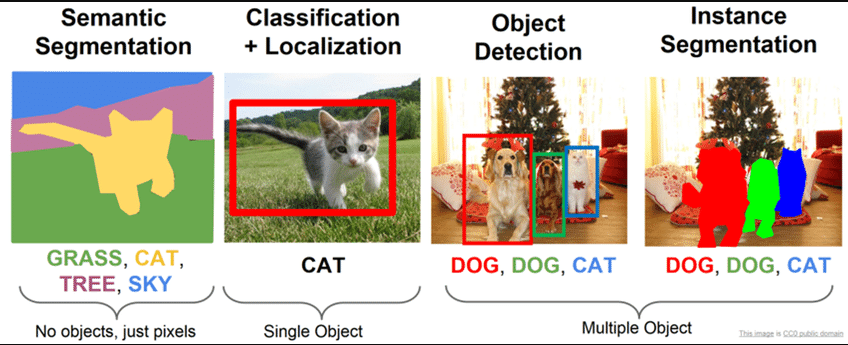Classification vs. localisation vs. semantic segmentation vs. instance segmentation
Last updated on:3 years ago
I am confused about segmentation, localisation, and tracking from time to time. Therefore, I want to take some notes and summarise the differences among them.

Introduction
Classification: the act or process of putting people or things into a group or class.
Localisation: the act or process of finding out exactly where something is.
Semantic: connected with the meaning of words and sentences.
Instance: a particular example or case of something.
Tracking: to find somebody/something by following the marks.


Classification
The task of object classification requires binary labels indicating whether objects are present in an image.
Object detection / Localisation
Object detection is also regarded as object localisation. Detecting an object entails stating that a thing belonging to a specified class is present and localising it in the image.
Semantic segmentation
Labelling semantic objects in a scene requires that each pixel of an image be labelled as belonging to a category, such as a sky, chair, etc. In contrast to the detection task, individual instances of objects do not need to be segmented.
Instance segmentation
It is instance-level segmentation. In other words, every object will be extracted with a specific ID (sheep1, sheep2) and category (sheep, human).
The task is to segment individual object instances.
Panoptic segmentation
Instance segment objects and background.

Tracking
Online object detection / localisation or real-time instance segmentation.
Reference
[1] Lin, T.Y., Maire, M., Belongie, S., Hays, J., Perona, P., Ramanan, D., Dollár, P. and Zitnick, C.L., 2014, September. Microsoft coco: Common objects in context. In European conference on computer vision (pp. 740-755). Springer, Cham.
本博客所有文章除特别声明外,均采用 CC BY-SA 4.0 协议 ,转载请注明出处!